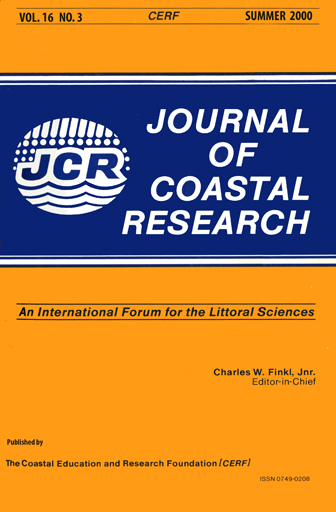The Impacts of Fish-Tail Groynes on Sediment Deposition at Morecambe, North-West England
Keywords:
Fish-tail groynes, coastal defence, sediment regime, channel stability, accretion patternsAbstract
The development of an elaborate system of fish-tail groynes at Morecambe, north-west England is discussed in relation to its impact on sediment deposition and beach formation. The comparison of beach surveys from 1992 and 1996 has shown that in all cases, sediment build-up has occurred around each groyne, although with a distinct spatial pattern, concluded to be caused by the influence of a large jetty built as part of the scheme and designed to regulate the position of the primary ebb tide channel. In addition, qualitative observations indicate that the pattern of sediment accretion has shown a shift from coarser to finer grade sediments concluded to be a result of the energy reduction and resulting inability of the tidal and wave currents to transport coarser sediments into the beach environment. As a result, the beach area has become largely silt and mud dominated, resulting in the need of beach feeding to provide suitable amenity beaches for the tourist industry.


